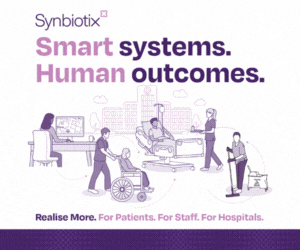Energy efficiency can deliver significant financial savings to cash-strapped hospitals. But in many cases, NHS Trusts seem unable to prioritise capital funding for the technology. Why do such basic opportunities remain unfulfilled? Peter Stockwell, Managing Director of Concept Energy Solutions examines the low cost solutions for energy saving.
Across the country, organisations are reaping the benefits of energy efficiency. Salford Royal Hospital in Greater Manchester is expected to slash £1.9m from its annual energy bill for example, thanks to a new efficiency programme part-funded by the Green Investment Bank (GIB).
The hospital’s investments include a new 2.5MW Combined Heat and Power (CHP) engine, an LED lighting upgrade and the optimisation of the Building Management System (BMS).
Furthermore, a recent report from Bloomberg New Energy Finance, says that UK businesses are implementing energy efficiency schemes at the highest rate ever. It reveals efficient lighting is the most popular installation choice, with use of lighting controls seeing significant growth.
But the Sustainable Development Unit, which exists to ensure the UK healthcare system fulfils its potential as a leading sustainable and low carbon service, has revealed a paradox.
It says the NHS in England has seen a decrease of just 3.5% in its building energy carbon footprint between 2007/08 and 2013/14. This equates to barely half a percentage point a year.
Thus, NHS progress has, in real terms, been moving at a snail's pace. This is a tragedy; the UK wide NHS estates are vast, their impacts huge. However, with the right knowledge, and an accurate picture of energy usage, quick win and low, or even no cost energy saving opportunities are still available in the healthcare sector today.
To pinpoint them, a precise methodology and robust approach to delivering change promptly and accurately is required.
The path to NHS energy efficiency
Firstly, a good energy survey to understand the opportunities, risks and existing challenges is essential. What are the low, or no cost energy saving opportunities and solutions we commonly identify in the healthcare sector? Without a detailed survey, facilities managers may well have no idea; they are swimming in the dark.
Reports must include breakdown of energy use by type and area, with an assessment of current performance against published benchmarks (and, perhaps, where applicable, PFI contract targets).
Further, detailed appraisal of condition of plant and equipment, efficiency and operation is necessary. Recommendations to improve performance, distinguishing between low and no cost initiatives and those requiring capital outlay can then be provided. A detailed analysis (such as the Concept Energy team would undertake), will mean that the quantification of savings is more accurate and there is less guess-work. This means finance departments can have confidence that the payback calculation in years/months is realistic, and not simply a hopeful or over-inflated aspiration.
In all of this, the use of an experienced and independent consultant is recommended. Whilst consultancy costs are high, in-house staff may have neither the resources nor expertise to carry out such work effectively. Without a clear picture up front, delivered by experts, energy efficiency attempts may become mired in confusion.
The common approach and the benefits to hand
Whilst all NHS Trusts vary, plainly they will share certain characteristics; all wish to save cash and carbon, all wish to provide first class, modern, reliable healthcare.
Examples of improvements from a large UK surgical centre that Concept worked with are worth sharing, as a template for others. Following initial analysis, it was confirmed that the hospital’s energy consumption was 41% above expected levels (having accounted for weather variations) and was continuing to increase.
During the essential energy survey, a full review of the hospital's plant operation and status of all installed assets and equipment was conducted to identify areas for improvement.
The primary cause of the excess consumption was a lack of availability of energy data for monitoring and targeting purposes, limited HVAC controls and BMS settings that did not match internal requirements or occupancy levels.
Equally crucially, it was evident that the control of building services had reduced over time and systems were not being reviewed by appropriately experienced staff. Such are the data putting in place a detailed survey will bring.
Driving the right outcomes
Following the onsite review, BMS appraisal and detailed consumption analysis, estimated savings of 33% were identified and recommended. The recommendations amounted to £200,000 in annual energy savings and included a series of no or low cost adjustments, such as simple changes to plant start/stop times, air conditioning control amendments and matching space temperatures to avoid overheating.
A key benefit for this hospital and other similar Trusts, the savings achieved from initial low or no cost measures such as these can be used to fund bigger capital upgrades like lighting upgrades, monitoring and targeting, and BMS improvements. These technologies can then offer a quick payback and can deliver even greater wins.
Tomorrow's sustainable NHS
Further work is taking place to help green up the NHS. In Bristol, a specially developed journey sharing app is helping NHS staff reduce congestion, CO2 emissions and travel costs by finding walking, cycling or car-pooling "buddies" to share their daily commute to work.
Such efforts are to be commended. But they must come alongside or follow surveys and concrete evidencing of the true metrics of energy wastage within hospital buildings themselves. So much carbon can usefully and easily be mitigated, but the journey starts with realistic, accurate assessments on where the path must lead.
A familiar phrase in energy efficiency parlance is: "What you can't measure, you can't manage." Such is the truth in the NHS. Establish where energy wastage is, assess the fastest ROI and low or no cost paths to savings and get work started. Then finance the more costly improvements, and take the journey further.












